Serena Brunswig curates first art exhibition, representing the concept of time in a garden that slows the race against the clock.
The idea of curating an art show had been circling Brunswig’s mind for a year, but she struggled to find the perfect space for her vision, let alone an affordable one. Most venues she showed interest in — the all-too-familiar sterile space against an empty, white backdrop — were completely out of the average art student’s budget.
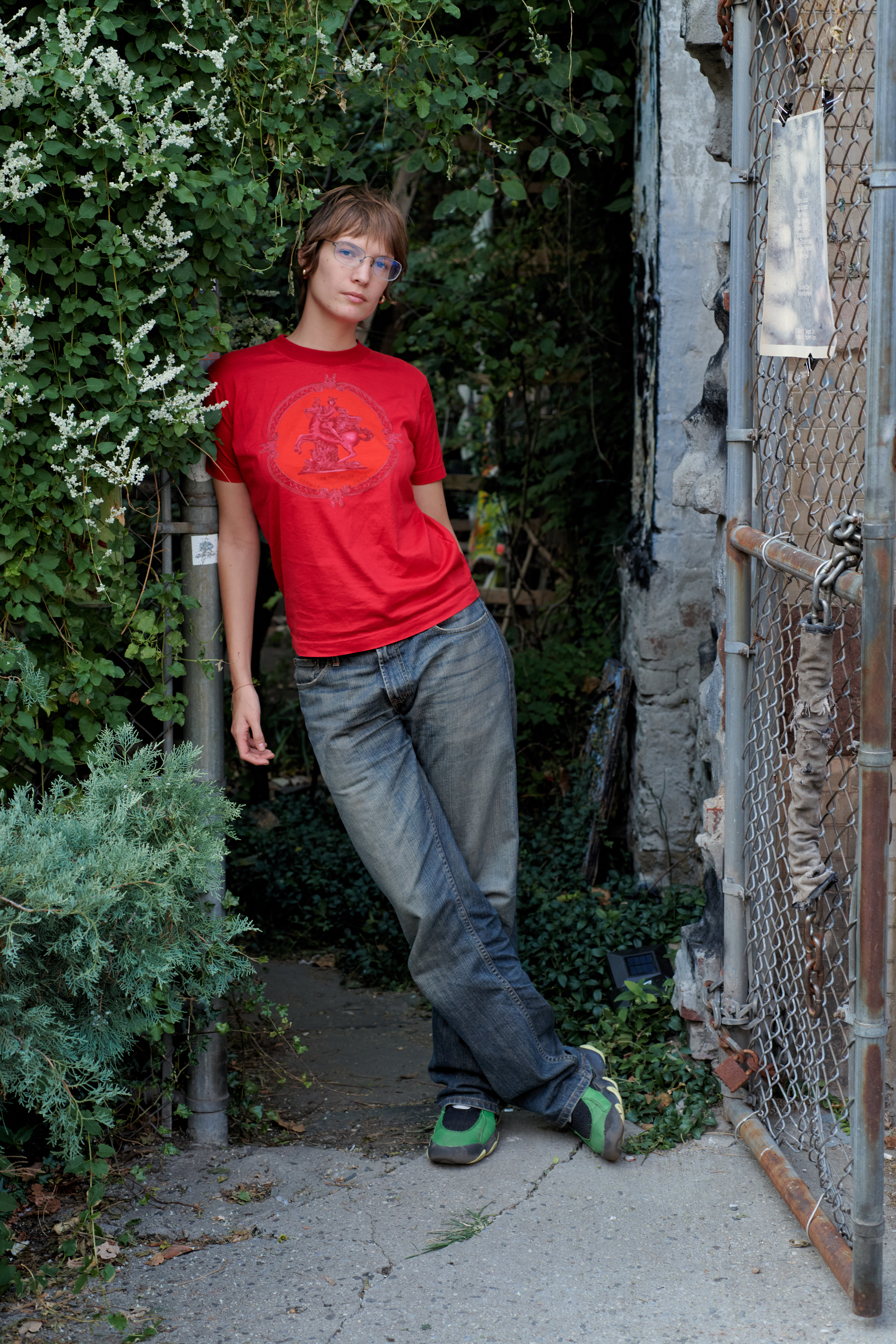
As summer began, Brunswig found herself in a stalemate: how can she make her vision come to life? Then, she walked into Eldert Street Garden.
“After spending the whole day here, it made me feel really inspired by the environment and the peacefulness,” Brunswig said.
Brunswig discovered the garden through her friend Lily Kharlamb. For Kharlamb, it became a fond reminder of a garden she fostered while studying at The State University of New York (SUNY) New Paltz.
“I came in here every day it was open until there was someone here for me to ask about this place. It was Rodrigo, and that was simply it,” Kharlamb said.
Back in 2009, Rodrigo Gonzalez created Eldert Street Garden along with 14 other green-thumbed individuals, but over time, he has become one of the few tending to the garden’s upkeep. Learning the garden’s story, Kharlamb stepped in, helping Gonazalez trim the weeds, clean the small koi pond — curiously referenced in the Halsey album “Hopeless Fountain Kingdom” — and purchased her own plot.
Upon connecting Brunswig to the park, Gonzalez was the first introduction. Being an artist himself, he was thrilled to help bring her exhibition to fruition.
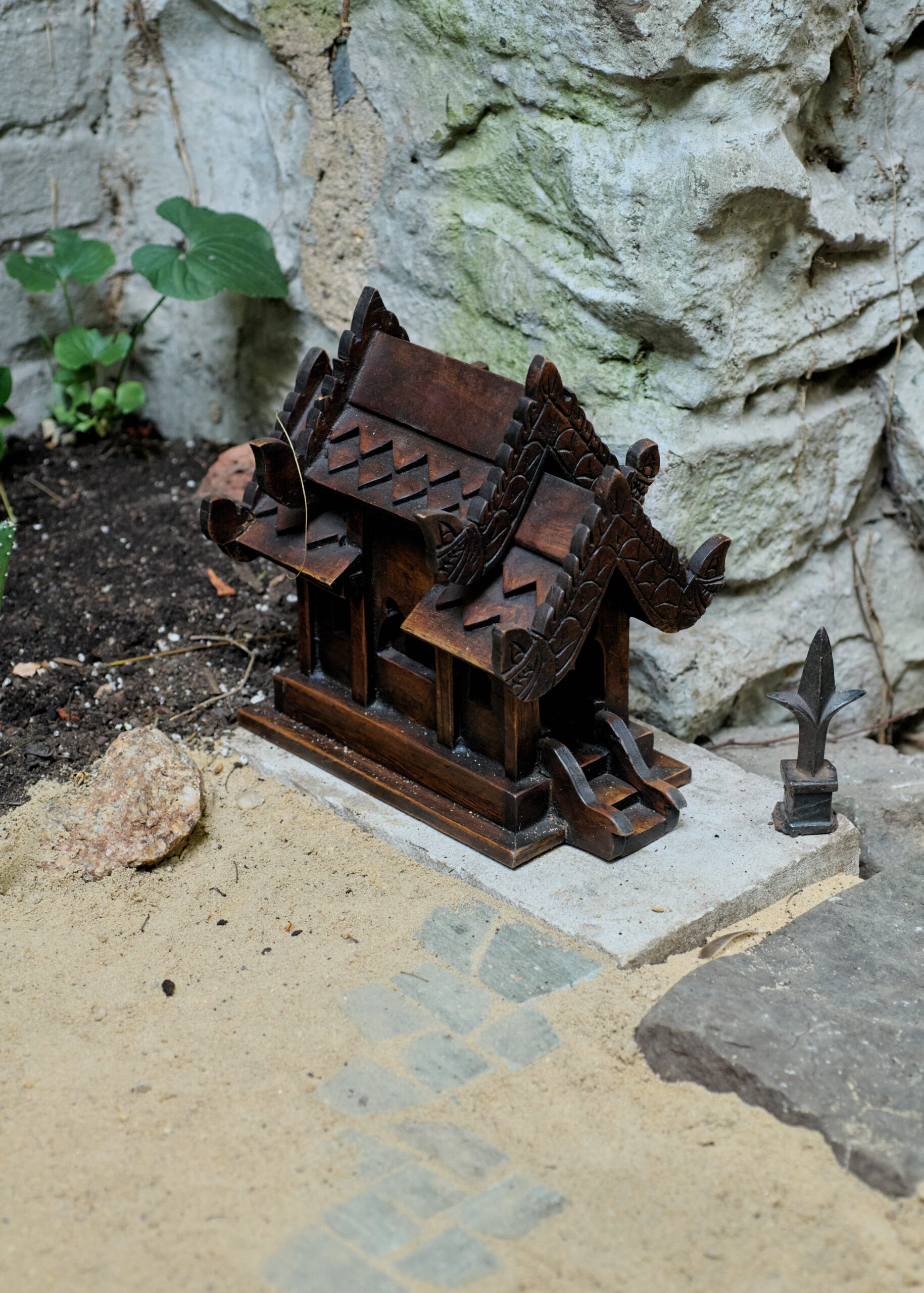
“I was like ‘When? And can I be in it?’ I love it, and I’ve organized all the mural work,” Gonzalez said, gesturing to the Hungry Hungry Caterpillar mural he sat next to. There are also two others — a Wizard of Oz-esque mural painted by the founding community members along with nearby neighbors and their families, and a chameleon in front of a blue-swirled backdrop created by one of his close friends.
“It’s nice to have someone else jump on [a project], because when you’re doing a few different jobs, sometimes one of those jobs won’t be done the best,” Gonzalez said with gratitude to Brunswig. “If the [art show] works out, this will just be the first year.”
With the ‘okay’ from Gonzalez, Brunswig started reaching out to artists both individually and through an “open call” on her Instagram. “I just got to planning, and I’ve been planning it all summer,” she said. She allowed each artist to come to the garden and choose the space their piece fit best, ensuring the art felt like a natural extension of the garden.
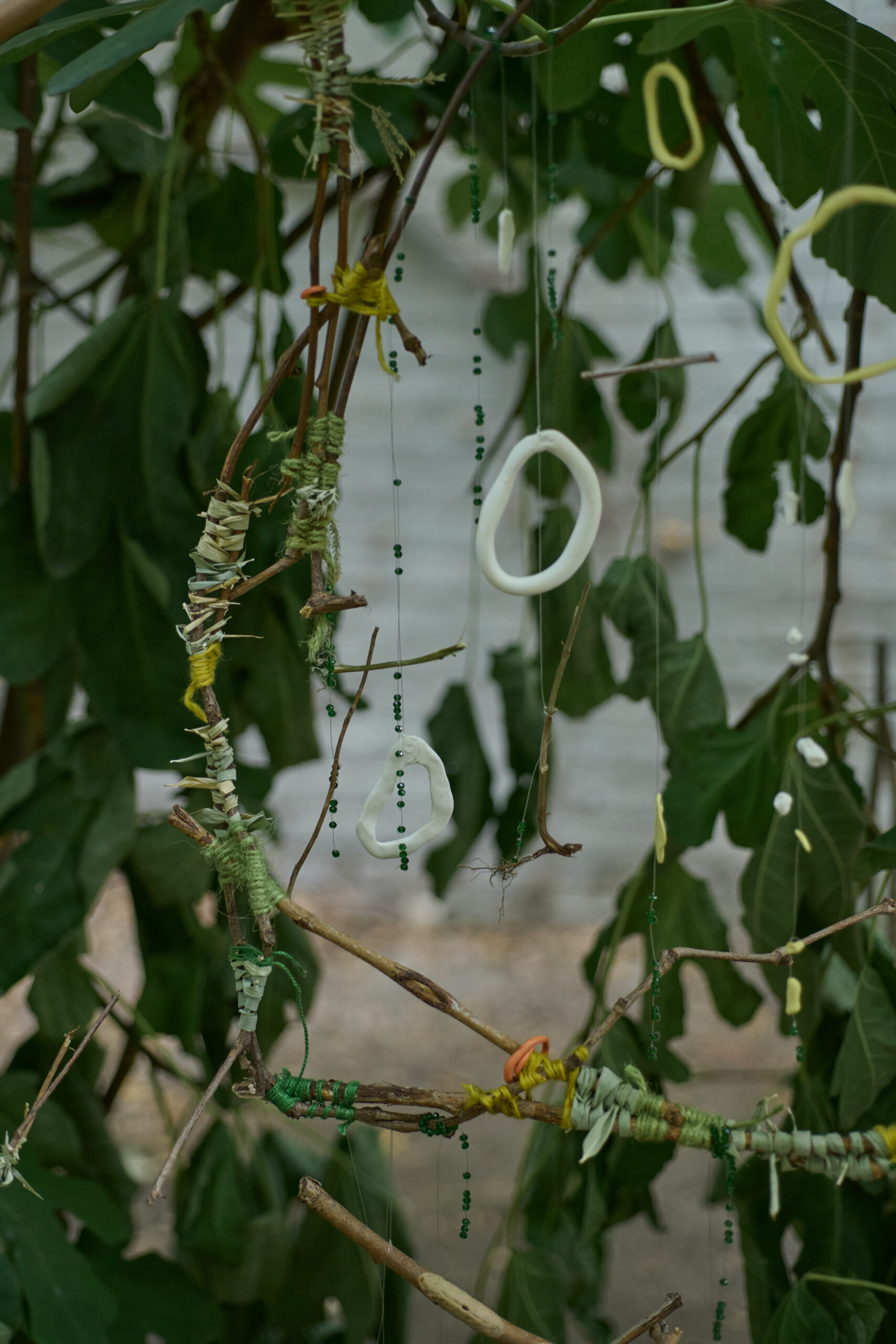
“After seeing the space, I made new work specifically for the site,” Jackson Lang Fischbach, a featured artist and 2024 Parsons graduate said. His work used shortened planks of wood and acrylic, each wood piece at a slight angle and in a different color.
“My work is about developing a physical relationship between photography and its surroundings,” Lang Fischbach said. “With the changing light of the sun passing over and coming through the trees, it illuminated the work in different ways throughout the day, and really gave it a sense of time. A sense of holding the light. The work was designed to flourish outside.”
Other pieces reflected similar sentiments of collaborating with the nature of the garden; in particular, Gonzalez’s piece, “Spirit Village,” used “found materials” from the garden. The tiny wood-carved home, Gonzalez said, is inspired by the Chinese cultural practice of creating miniature everyday paper objects for the spirits of the deceased.
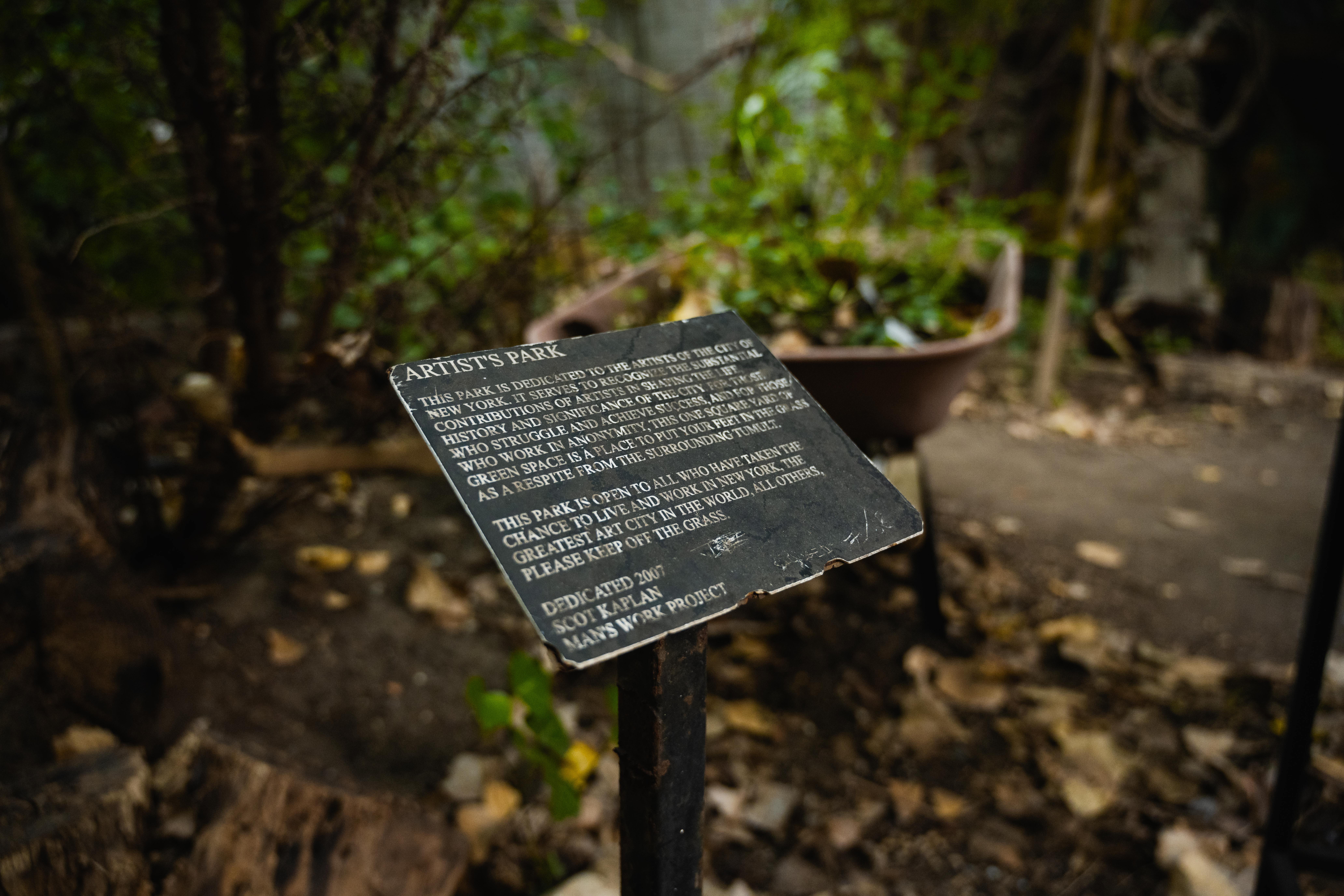
“I was also inspired by the sense that comes with observing a place that is both used but also in ruin. My personal view about our culture and cities, they’re both used, but they’re in ruin,” Gonzalez said. “You live in the place, even though it’s already worn away. And maybe it’s not in its golden era, but it’s still active. It’s still home.”
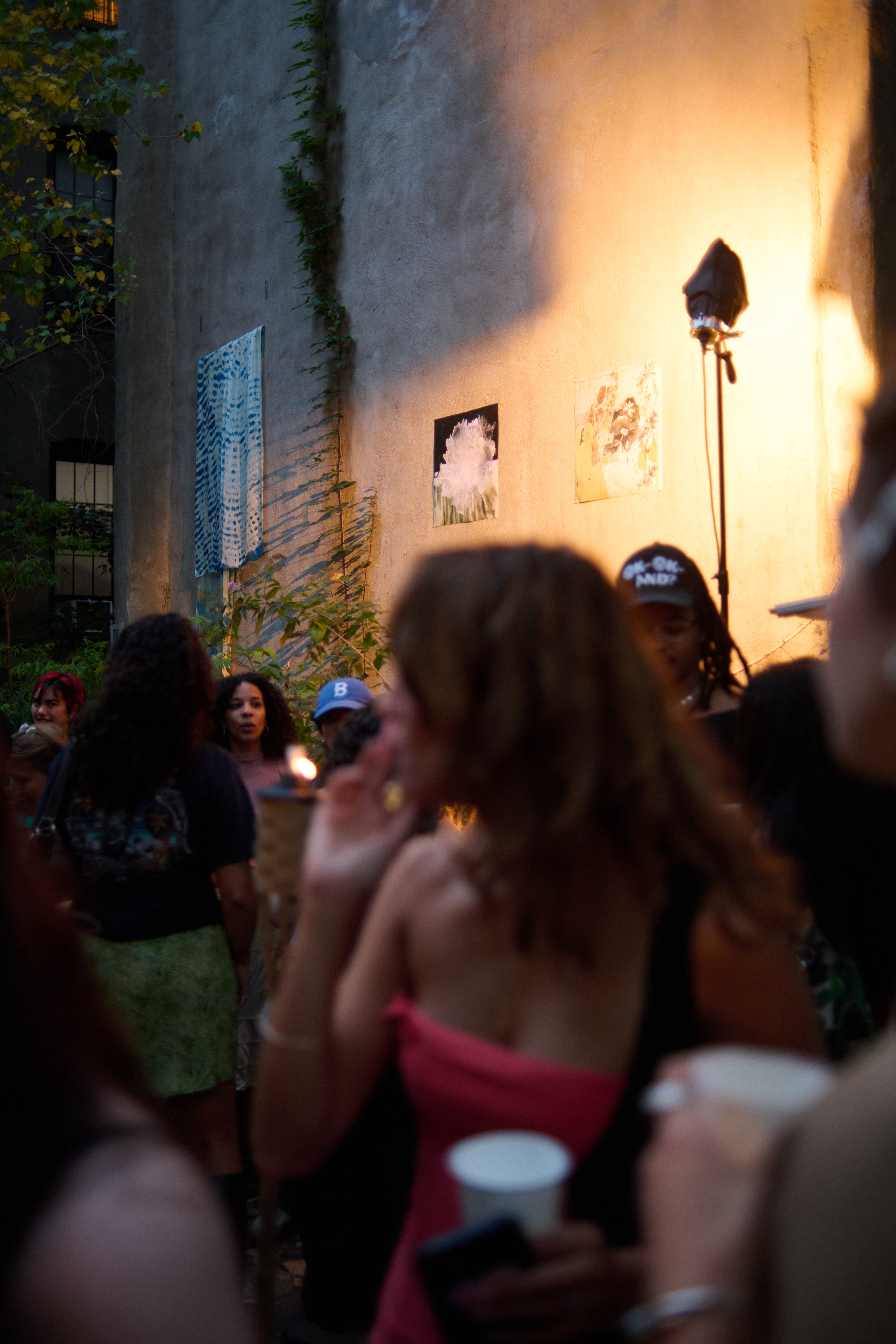
Other pieces included tapestries by Hsien Hua Li, which swayed in the wind along the left wall of the garden, and Oriana Lacua’s “The Undoing,” also made by found material from the garden and held together by yarn.
Brunswig began advertising the show in late August, and her Instagram post gathered over 8,000 impressions. As opening night approached, Brunswig utilized her university printing points to create posters and pamphlets, each with descriptions of the pieces, artists’ names, and a small map showing where each piece was placed in the garden.
On the evening of Sept. 13, Brunswig opened the metal-fenced door, and the previously serene garden filled with chattering New School students, neighbors, and garden volunteers. Brunswig’s friends hurriedly handed out paper cups half-filled with affordable Chardonnay and Sauvignon Blanc. Lights twinkled above a crowd of nearly 200 attendees, as well as around each piece of artwork, illuminating their natural beauty.
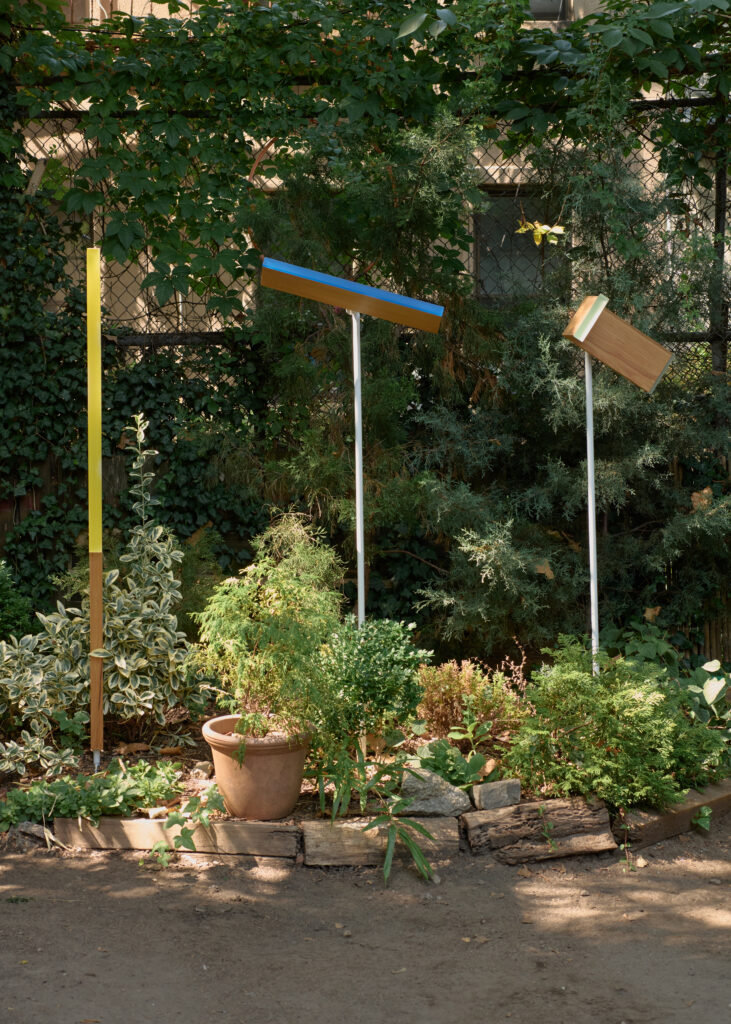
The exhibit was open from 11 a.m. till 7 p.m. for the remainder of the weekend. Brunswig and Lang Fischbach sat by a small table towards the end of the garden, alongside a quiet neighborhood cat, greeting a light trickle of guests. After the buzz of Friday night, the garden reverted to its calm state; the sun hitting its designated places, and a breeze sweeping through the tree canopy above, creating a rift in the silence of nature’s green stillness.
“Speaking to [Gonzalez], he told me that there was interest from new people about volunteering at the garden and potentially getting a plot of land where they can grow fruit and vegetables or do some landscaping work around the area,” Lang Fischbach said. “I think getting attention to the spot so that even after the show is gone, people are continuing to come there and participate — that was huge.”
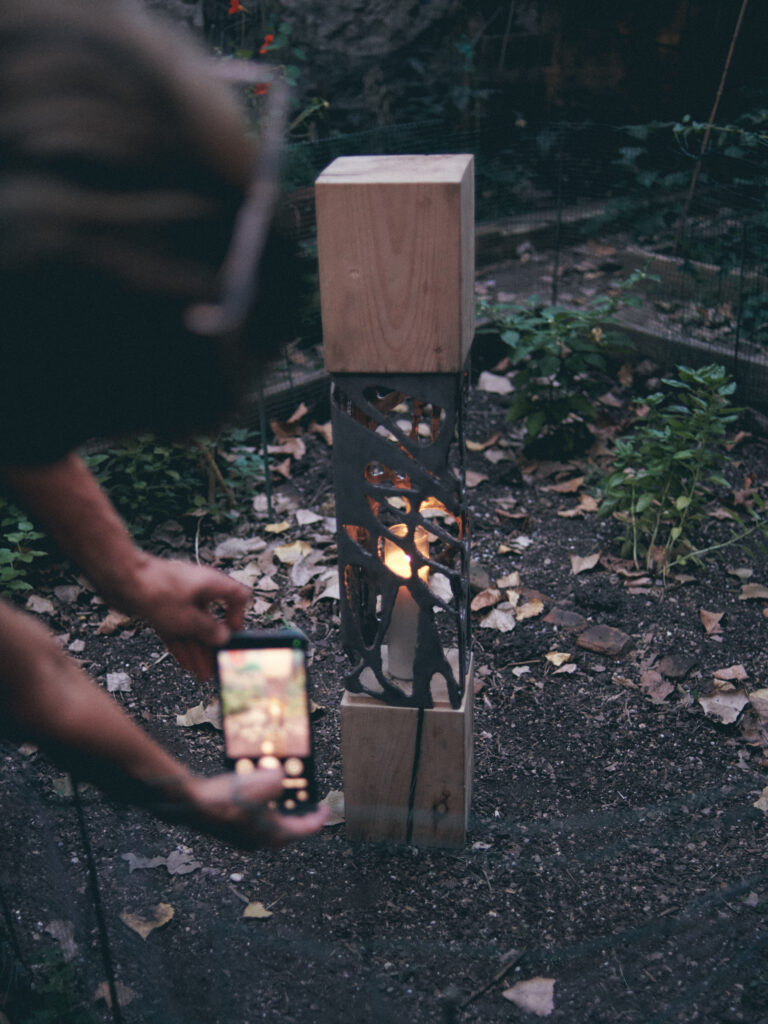
For Gonzalez, the 14-year garden resident, the space represents something the surrounding neighborhood severely lacked in the past: as one of the only sites of nature in the area, it’s where community members can gather, and find the unique serenity that Kharlamb and Brunswig discovered and grew.
“We need places that are about interaction, communication, and activities. Places where kids, the same as adults, same as seniors, can come in and enjoy themselves and surround themselves with nature,” Gonzalez said. “The difference between being on the sidewalk and being inside this garden is noticeable. The temperature drops, the air is cleaner, the sound is quiet.”

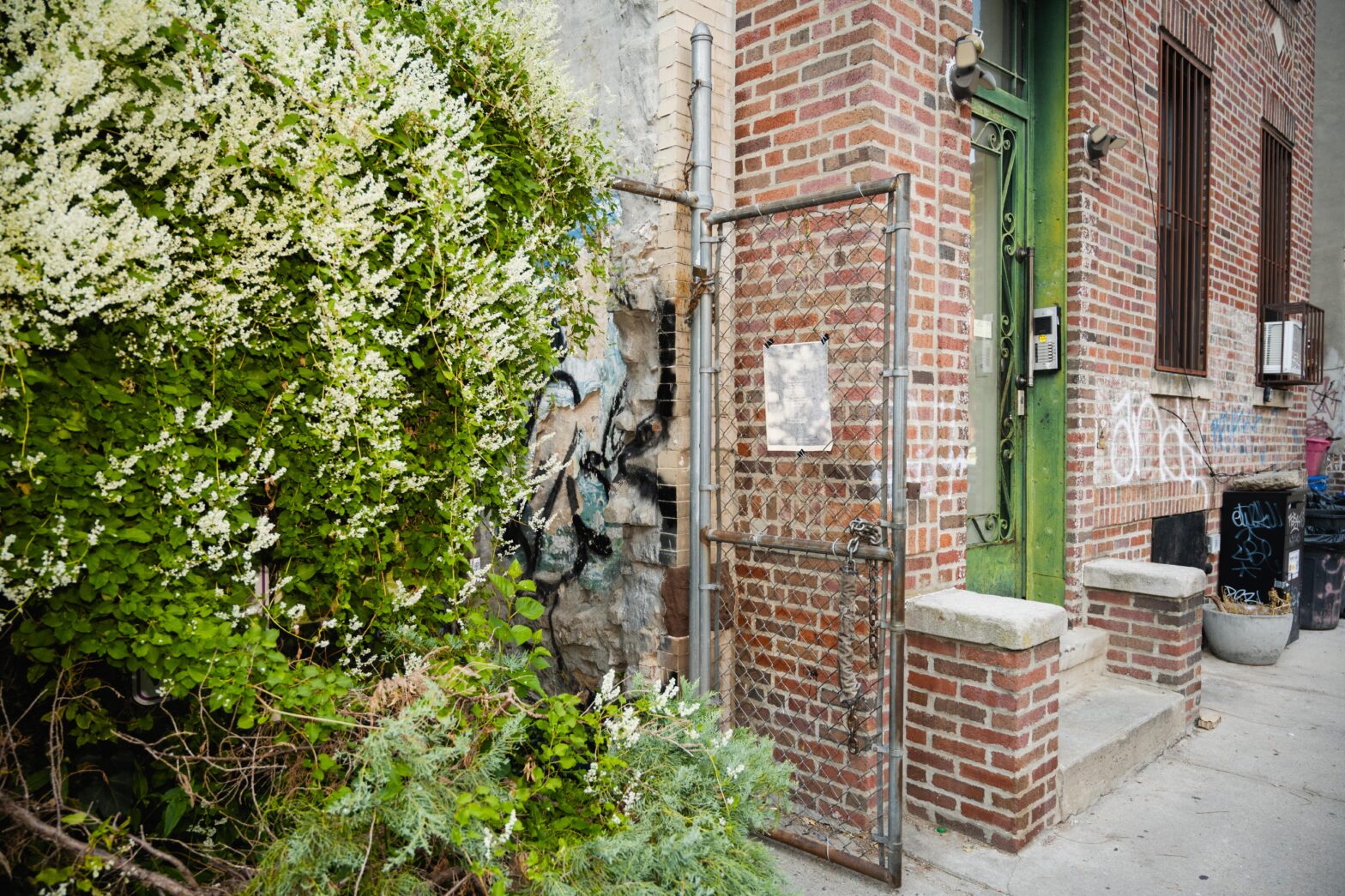
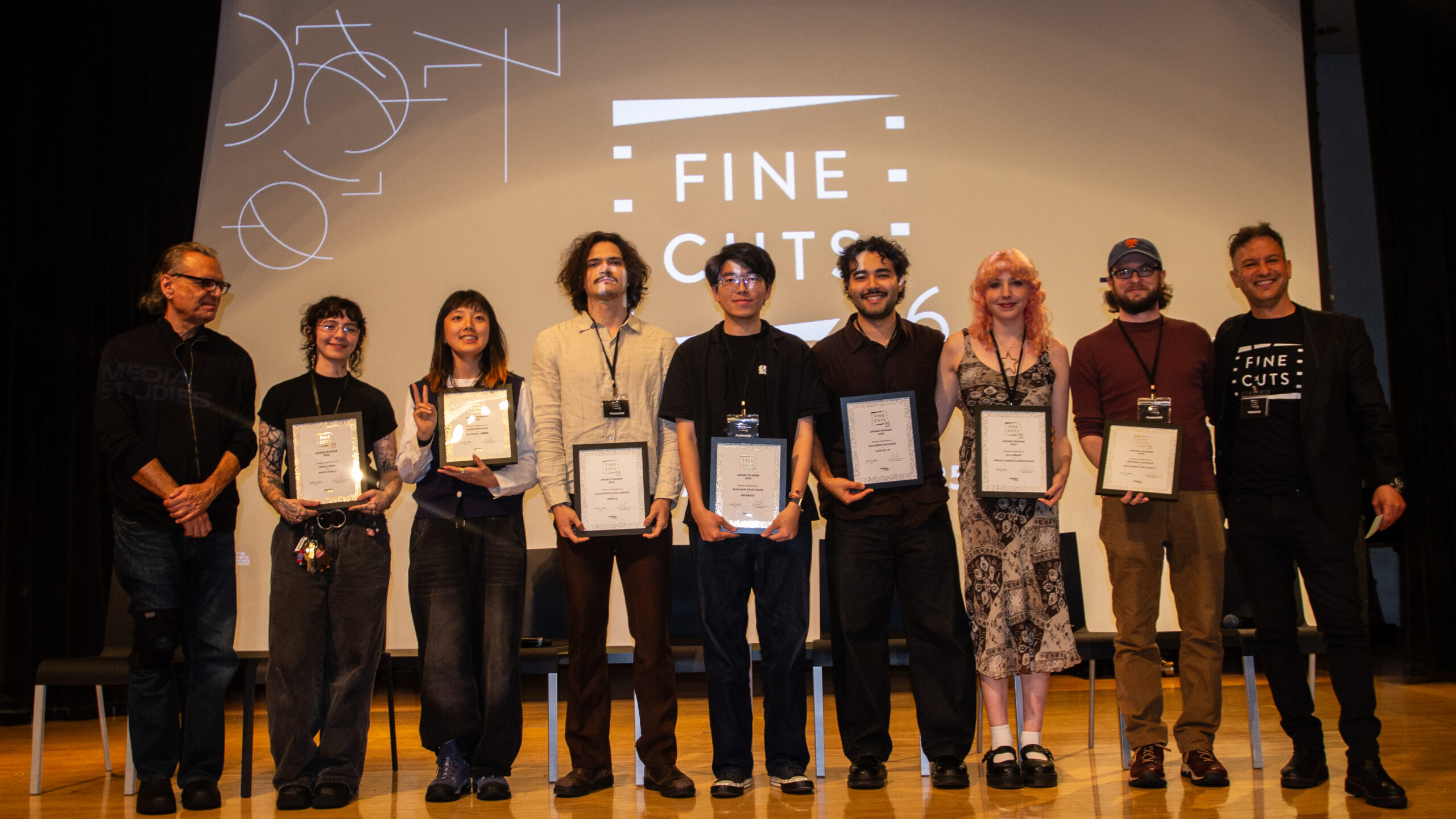
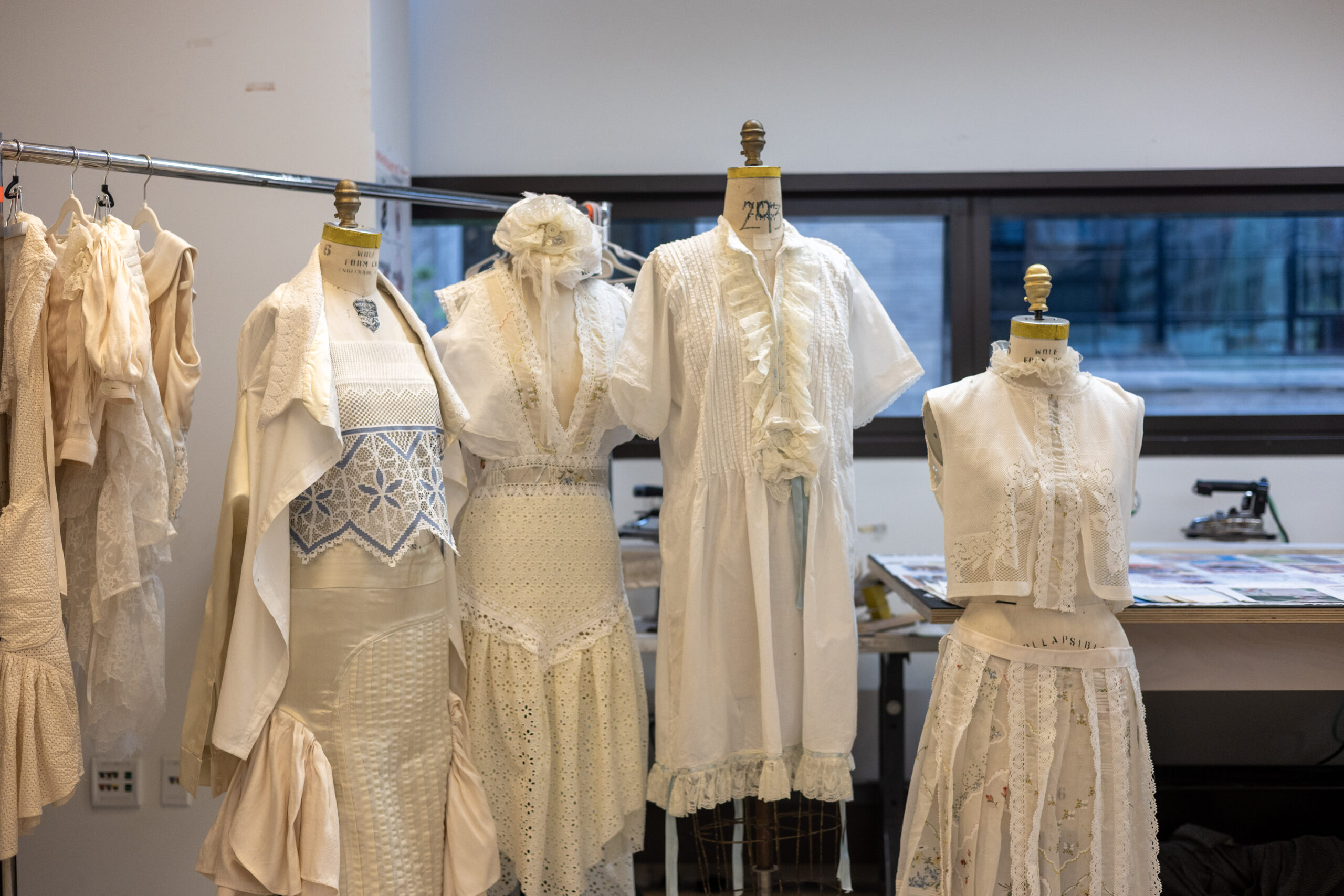

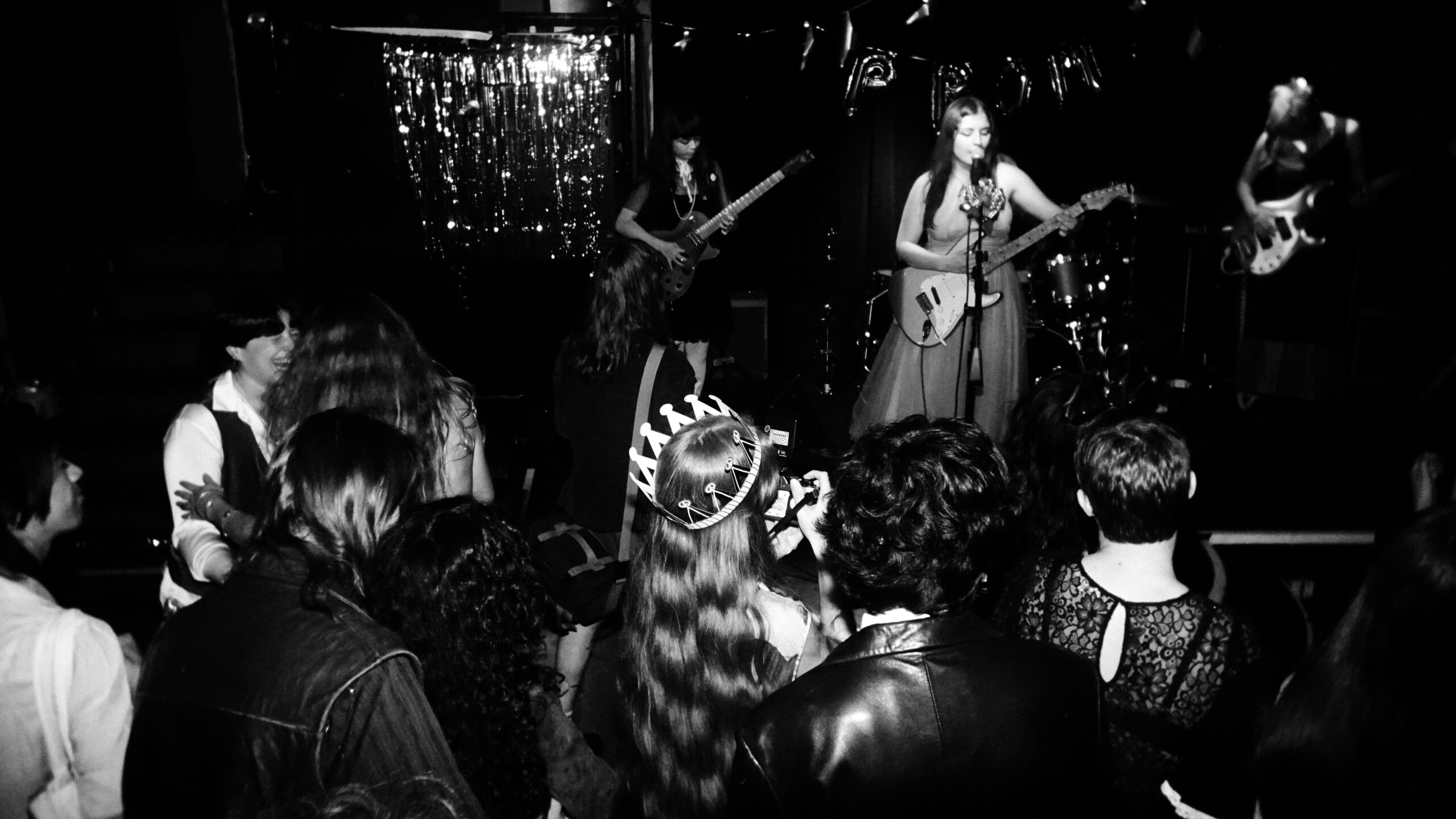
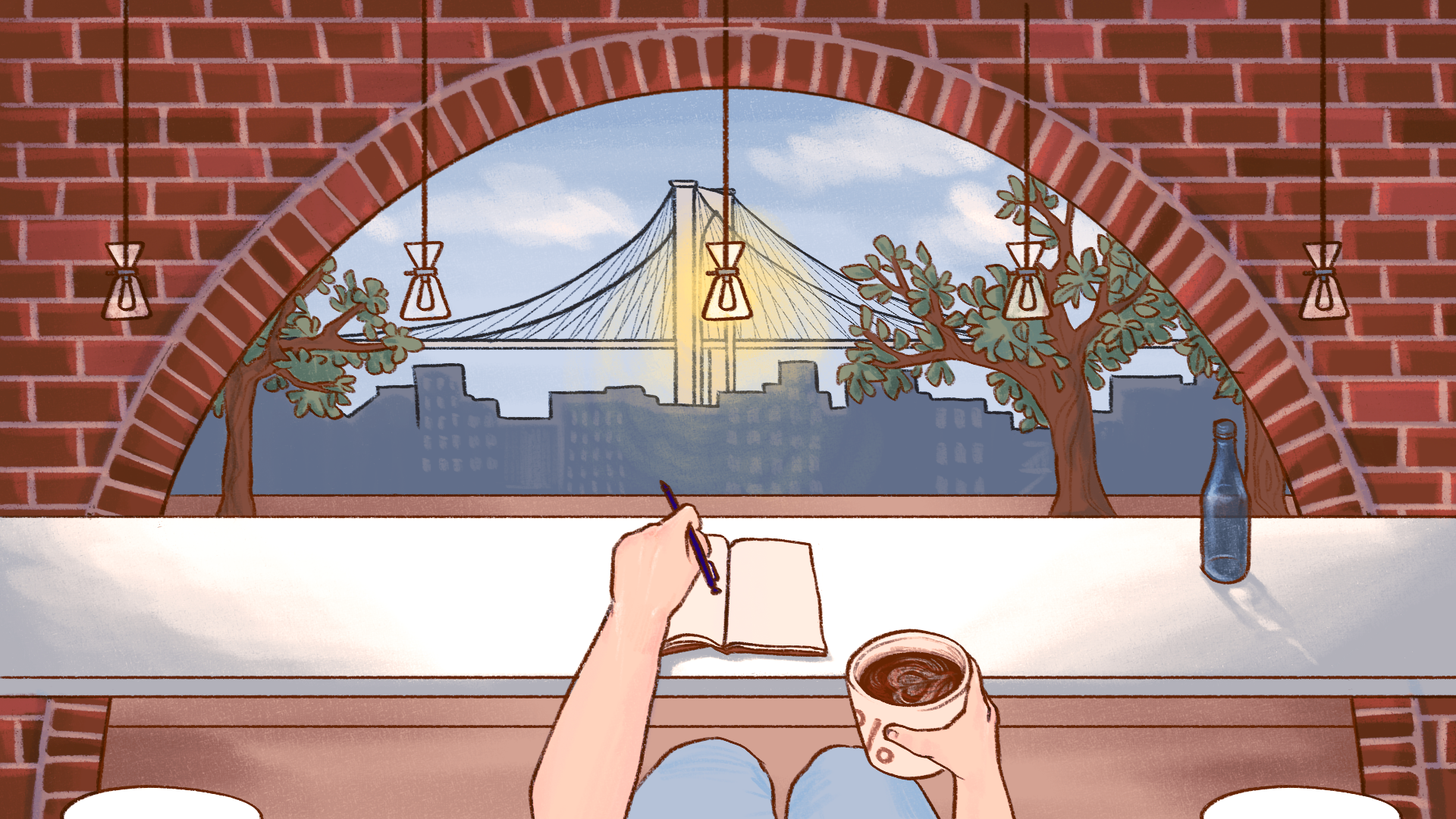

Leave a Reply